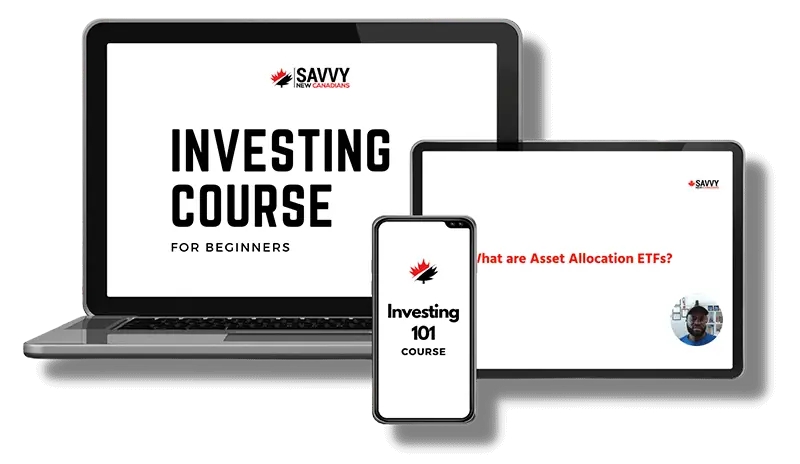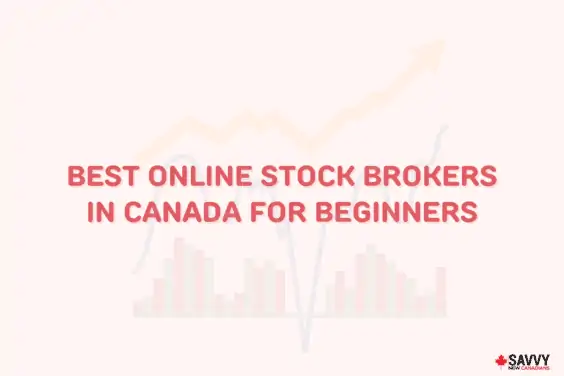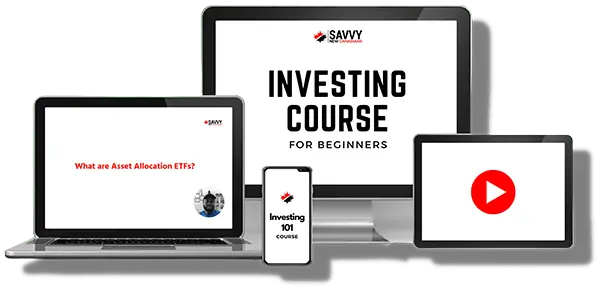An Exchange-Traded Fund (ETF) is an investment fund that contains a basket of securities (similar to a mutual fund), and that can be bought and sold all day at market-determined prices (similar to stocks).
ETFs are designed to meet specific investment objectives or strategies. Most ETFs hold securities that mirror the market index they are set up to track and whose returns they attempt to replicate.
Compared to stocks and bonds, ETFs are a relatively new financial product, given their creation in Canada in 1990. The first ETF in the world was known as the Toronto Index Participation Shares (TIPS).
ETFs have become very popular with investors attracted by their low-fee status, liquidity, and diversification potential.
Related: Best ETFs in Canada.
Types of ETFs
An ETF can hold various asset classes, including equities (stocks), fixed income (bonds), commodities, foreign currencies, etc.
There are thousands of ETFs available to investors, and they can be categorized based on the asset class of securities they hold, investing management style, industry sector, asset-class size, use of derivatives, and so on.
The main types of ETFs are:
1. Index ETFs: The majority of ETFs are index ETFs. They are designed to track the performance of a market index, which could be a broad index (for example, S&P 500 and S&P/TSX Composite Index) or a sector-specific index (S&P/TSX Capped Utilities Index).
Index ETFs utilize a passive investing style in that they hold securities representative of their benchmark index and do not attempt to outperform the index (market) by frequently buying and selling securities being held. Index ETFs can track stocks, bonds, commodities, and other indices.
2. Actively Managed ETFs: Unlike Index ETFs, actively-managed ETFs do not track any single market index. These ETFs attempt to “beat the market” by actively picking securities that are expected to perform well.
As a result of active management, the MER of actively-managed ETFs is higher than an index ETF.
3. Sector-Specific ETFs: These ETFs are designed to give investors exposure to certain industry sectors, e.g. Real Estate, Health Care, Energy (Oil and Gas), Financials, Telecoms, Utilities, and more.
4. International ETFs: These ETFs expose investors to international stock and bond markets. They can be categorized further into Global ETFs, Developed Market ETFs, Emerging Market ETFs, Frontier Market ETFs, etc.
Examples of international ETFs include iShares Core MSCI All Country World ex Canada Index ETF (XAW) and Vanguard FTSE Emerging Markets All Cap Index ETF (VEE)
5. Fixed Income or Bond ETFs: As the main implies, a bond ETF tracks a broad-market or sector-specific bond index and attempts to replicate its performance.
Examples of Bond ETFs include BMO Aggregate Bond Index ETF (ZAG), Vanguard Canadian Short-term Bond Index ETF (VSB), and iShares Core Canadian Universe Bond Index ETF (XBB).
6. Equity ETFs: These track stock indices. Examples include iShares Core S&P/TSX Capped Composite Index ETF (XIC), Vanguard FTSE Canada All Cap Index ETF (VCN), and Horizons S&P/TSX 60 ETF (HXT).
7. Commodity ETFs: These ETFs expose investors to commodity markets by either purchasing the physical commodity (such as gold, corn, wheat, soybeans, cotton, cocoa, sugar), investing in equities of companies that are involved in those commodities (such as Miners), or through the use of commodity futures contracts.
Examples of commodity ETFs include Horizons Gold ETF (HUG), iShares S&P/TSX Global Gold Index ETF (XGD), and BMO Junior Oil Index ETF (ZJO).
Investors may use commodity ETFs to further diversify their investment portfolio while also taking advantage of the opposite correlation that some commodities have relative to stocks.
8. Currency ETFs: These ETFs may track single or multiple-currency indices, e.g. Horizons U.S. Dollar Currency ETF (DLR).
9. Leveraged ETFs: These are ETFs that aim to double or even triple the performance of a particular index they track. They use financial derivatives and debt (leverage) to amplify their returns and are considered complex and highly speculative investments. They get expensive on fees because a lot of active trading/management is involved.
Examples of Leveraged ETFs include Horizons BetaPro S&P/TSX 60 Bull Plus ETF (HXU) and Horizons BetaPro S&P/TSX 60 Bear Plus ETF (HXD).
10. Inverse ETFs: An inverse ETF is designed to move in the opposite direction of the index it is tracking. For example, if the benchmark index falls by 5%, the inverse ETF tracking is expected to rise by 5%, and vice-versa. Like leveraged ETFs, they also involve using complex instruments – derivatives.
Examples of inverse ETFs include Horizons BetaPro S&P/TSX 60™ Daily Inverse ETF (HIX) and BetaPro S&P 500® Daily Inverse ETF (HIU).
ETFs vs. Mutual Funds
ETFs and mutual funds are similar in some ways. For example, they:
- Pool the assets of several investors together and use them to buy a basket of securities.
- Offer investors access to a diversified portfolio of securities.
- Like index mutual funds, index ETFs track a benchmark index and attempt replicating its performance.
- Like index mutual funds, most ETFs utilize a passive investment management style.
Differences between ETFs and Mutual Funds:
Market Pricing and Trading: ETF units can be traded (bought and sold) throughout the day on a stock exchange and experience price changes just like stocks.
In contrast, mutual funds do not have their prices fluctuating throughout the day due to forces of supply and demand and are not traded all day long.
The price of individual mutual fund shares is determined at the close of the day when the fund’s net asset value (NAV) is calculated, and the price stays the same until the NAV is calculated again at the close of the next trading day.
Because ETF unit prices change throughout the trading day like stocks, investors can place market orders, limit orders, stop-loss orders, etc. just like for normal stock trading.
Passive vs. Active Management: Most ETFs are passively managed, while most mutual funds are actively managed, except for index mutual funds.
Management Expense Ratio (MER): The management fees charged for ETFs are usually lower than for mutual funds. The reason for this goes back to active management.
Most mutual funds are actively managed, and this activity results in more buying and selling activity (transaction costs) and more work by fund managers.
Lower fees for ETFs are one of the main drivers of their popularity because investors understand that they can increase their long-term returns by slashing their fees expense. There are equity ETFs with MER as low as 0.03%, compared to 2% or more for the average equity mutual fund.
Note that when ETFs are purchased through a brokerage account, the investor may be charged a fee (brokerage commission) per transaction.
Liquidity: Because ETFs can be traded all day on a stock exchange when the markets are open, they offer better liquidity than mutual funds.
Other Benefits of ETFs:
Tax Efficiency: There is a lower turnover of securities associated with an ETF portfolio because, due to the passive investing strategy, there is less buying and selling activity. With less trading, there are fewer capital gains distributions, enabling greater tax efficiency. Any taxes due on capital gains become due when you sell your ETF holding.
Diversification: It is easy to diversify your portfolio when using ETFs without having to buy several ETFs. With a relatively small amount of money, an average investor can buy into a globally diversified ETF.
For example, one-fund portfolio solutions like Vanguard’s recent offerings, including Vanguard Balanced ETF Portfolio (VBAL) and Vanguard Growth ETF Portfolio (VGRO), make it possible for investors to buy into just one ETF and still be diversified.
Transparency: It is easy to find out what securities an ETF holds in its portfolio at any time and in what proportion.
Costs of Investing With ETFs
MER: ETFs usually come with lower MERs than their mutual fund counterparts. The Management Expense Ratio (MER) combines a management fee and operating expenses.
The management fee is comprised mainly of the salary of the fund manager and other members of the investment team. Operating expenses include admin, legal, and audit fees; prospectuses, mailing, and stationery expenses.
The MER is calculated as a percentage of the fund’s assets and is shown in the fund’s prospectus.
Commissions: Although ETFs do not charge sales loads like mutual funds, brokerages generally charge commissions per transaction, i.e. when you buy and/or sell.
These fees can add up to become a significant expense if you trade frequently. Some discount brokerages offer commission-free ETFs.
Bid-Ask Spreads: Differences between the bid (buy) and ask (sell) price of an ETF indirectly add to the costs of investing using ETFs.
The spread means that if you buy an ETF unit and immediately sell it, you will still incur a transaction cost that is equal to the difference between the lowest price sellers are willing to sell for (ask price) and the highest price that buyers are willing to pay (bid price).
Essentially, you buy for slightly more and sell for a bit less. When an ETF is traded actively, the spread between the buy and sell price narrows, reducing this transaction cost.
Related: Investment Fees Associated With Mutual Funds
ETF Providers in Canada
The number of companies offering ETFs continues to increase rapidly every year as investors keep pulling funds from mutual funds and diverting them to ETFs. Some of the largest ETF providers in Canada include:
- iShares
- BMO
- Vanguard
- Horizons
- RBC
- First Asset
- PowerShares
- Mackenzie
- Purpose
- Harvest
- First Trust
- Franklin Templeton
- TDAM
Wealthsimple Invest

Professionally managed ETF portfolios
Multiple account types
Auto rebalancing and div reinvesting
Get a $25 bonus with a $500 deposit
Exchange-Traded Funds FAQ
All investments carry an element of risk, including ETFs. That said, ETFs can be safer than individual stocks because many are index ETFs by design. An index ETF comprises hundreds to thousands of investment securities (e.g. stocks, bonds, and commodities). Since it’s like a basket of investments, your portfolio is diversified to a degree and is less risky than holding onto just a handful of stocks. Here are some of the investment risks you should watch out for.
If you sell your ETF holdings at a price point lower than what you paid for them, you will lose money. ETFs trade on the stock exchange like stocks, with their prices changing (up or down) throughout the day. You should avoid overtrading because your trading commissions and fees add up and may negatively impact your overall returns. When possible, use a commission-free trading platform to minimize your trading fees.
You can purchase ETFs through an online brokerage such as Questrade or Wealthsimple Trade if you are comfortable with DIY investing.
Alternatively, you can use a robo-advisor service. These online wealth managers put together a portfolio of ETFs designed to match your risk tolerance and investment objectives. They also rebalance the portfolio automatically when it deviates from the appropriate asset allocation.
Beginner investors can use dollar-cost averaging (i.e. purchasing investments on a regular schedule regardless of the price) to purchase small amounts of an ETF. At a small cost, you can access globally diversified portfolios. You can even purchase one-fund ETFs that do not need to be re-balanced. ETFs have lower fees compared to mutual funds, and you can potentially earn a better return over time.
Conclusion
All investing activities carry some level of risk, and ETFs are no different. ETFs are associated with lower expense ratios, but if you are not a “buy and wait” long-term investor, it is important you also consider the brokerage commissions charged when looking at your overall investment fees.
ETFs are mostly taxed like mutual funds – you pay taxes on dividends and capital gains. The taxes due will differ depending on whether you are investing within a registered (RRSP, RRIF, TFSA) or non-registered account, using foreign-listed ETFs (U.S. and International), Equity, or Bond ETFs.
To invest in ETFs, you can use a full-service brokerage (they trade on your behalf) or a discount brokerage (DIY investing option).
Some of the major online discount brokerages in Canada are Wealthsimple Trade, Questrade, ScotiaiTrade, RBC Direct Investing, TD Direct Investing, Qtrade, and BMO InvestorLine.
Recommended Reading:






